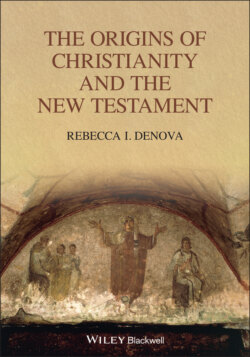Читать книгу The Origins of Christianity and the New Testament - Rebecca I. Denova - Страница 19
Acts of Worship/Rituals
ОглавлениеTemples were the homes of the gods on earth and were deemed “sacred space.” Unlike our modern places of worship, almost all the activity took place out of doors. This is where the altar was located, and people congregated around it. Because this was “sacred space,” one had to be in a state of “ritual purity” to enter and participate. “Ritual purity” is a state of being. Most rituals involved “washings,” but the concept is not necessarily related to hygiene.
Overseeing all aspects of worship were priests and priestesses. Their function was to ensure that worship was done correctly (according to the ancestral traditions). Some communities had a priest elevated above others, the high-priest. Unlike modern clergy, the priesthoods were not charged with caring for the souls of the congregation. Their first loyalty was caring for the god/goddess. A major difference with the priesthoods in the ancient world is that with few exceptions, they were part-time jobs. Priests and priestesses served in rotation (sometimes a week, sometimes a month). When they were finished with their term of service, they went back to their normal jobs or businesses.
Priests and priestesses oversaw the rituals (from the Latin ritus, “doing things”) that included sacrifices, prayers, and hymns (prayers sung to music). The most important element of these rituals was that of “sacrifices.” Sacrifices were crucial to maintaining the balance between gods and humans. These were communal events directed to the welfare and prosperity of the group. Sacrifices had to be something of value, which in the ancient world was often meat. Priests sacrificed sheep, goats, pigs, oxen, fowl, and wheat cakes if you could not afford an animal. Thousands of Temples had daily sacrifices. A portion of the animal was divided among the priests, and then the rest was distributed to the people. This is likely the only time that the poor were able to eat meat.
Another element of rituals was specific to marking heightened stages in life: birth, puberty, marriage, death. The modern term for these occasions, which were all celebrated through religious rituals, is “rites of passage” (some of which became the later Catholic “sacraments”).
